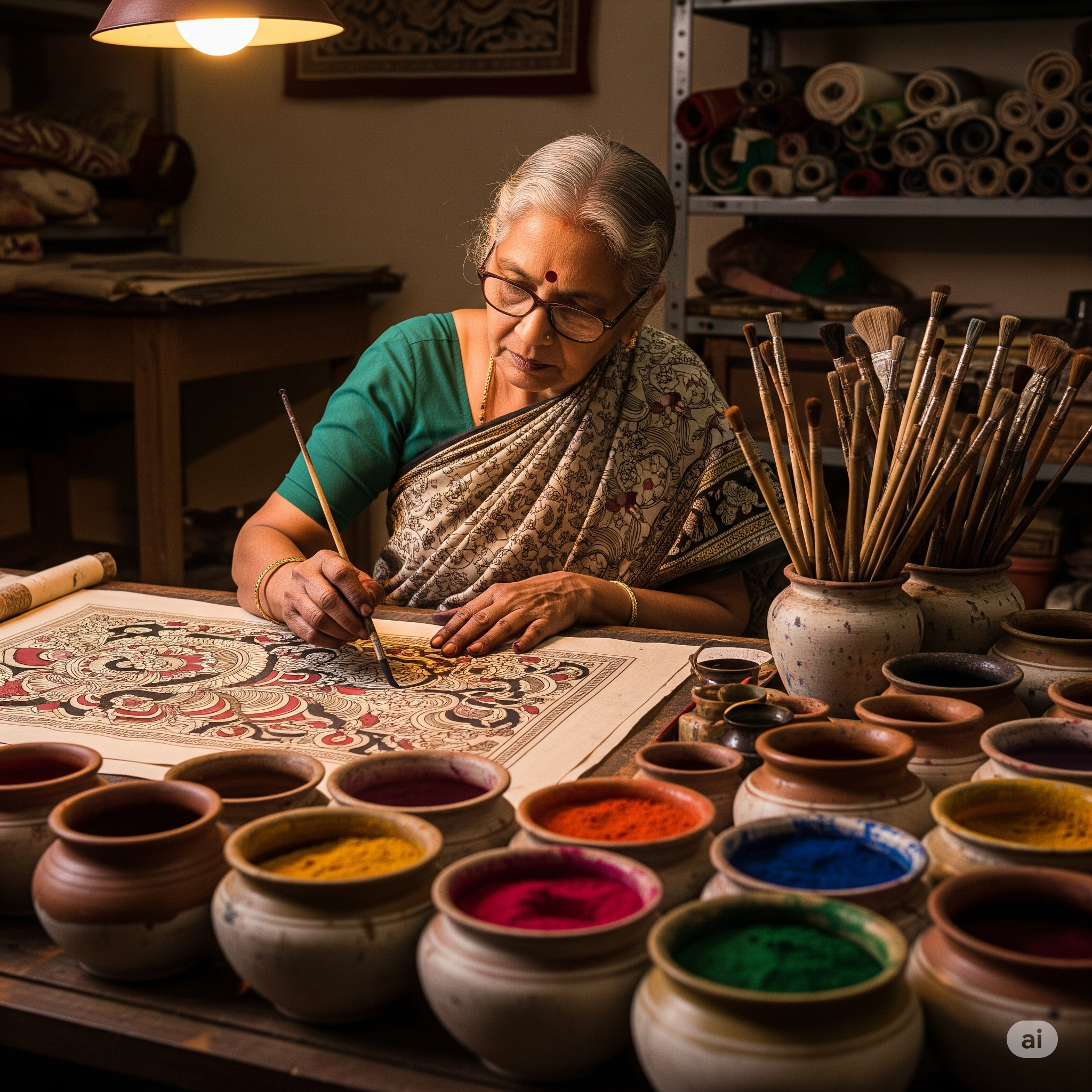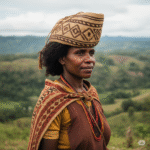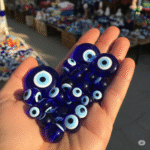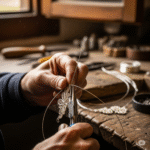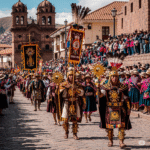In a small riverside town in Andhra Pradesh, the scent of natural dyes and the rhythm of hand-drawn lines fill the air. This is the home of Savitri Devi, a 67-year-old artist who has dedicated her life to preserving the age-old craft of Kalamkari painting. Her work is not just about fabric and brushwork. It is a living bridge between ancient storytelling and today’s creative expression.
What is Kalamkari?
Kalamkari is a traditional form of hand-painting on cloth that uses a bamboo pen (called a kalam) and plant-based dyes. The word itself comes from the Persian “kalam” meaning pen, and “kari” meaning craftsmanship. There are two major styles of Kalamkari in India — the Srikalahasti style, which is entirely hand-drawn, and the Machilipatnam style, which includes block printing.
Savitri Devi belongs to the Srikalahasti tradition. Her paintings are often inspired by Hindu mythology, nature, and village life. Each piece can take days or even weeks to complete, depending on its size and complexity.
A Craft Passed Down Through Generations
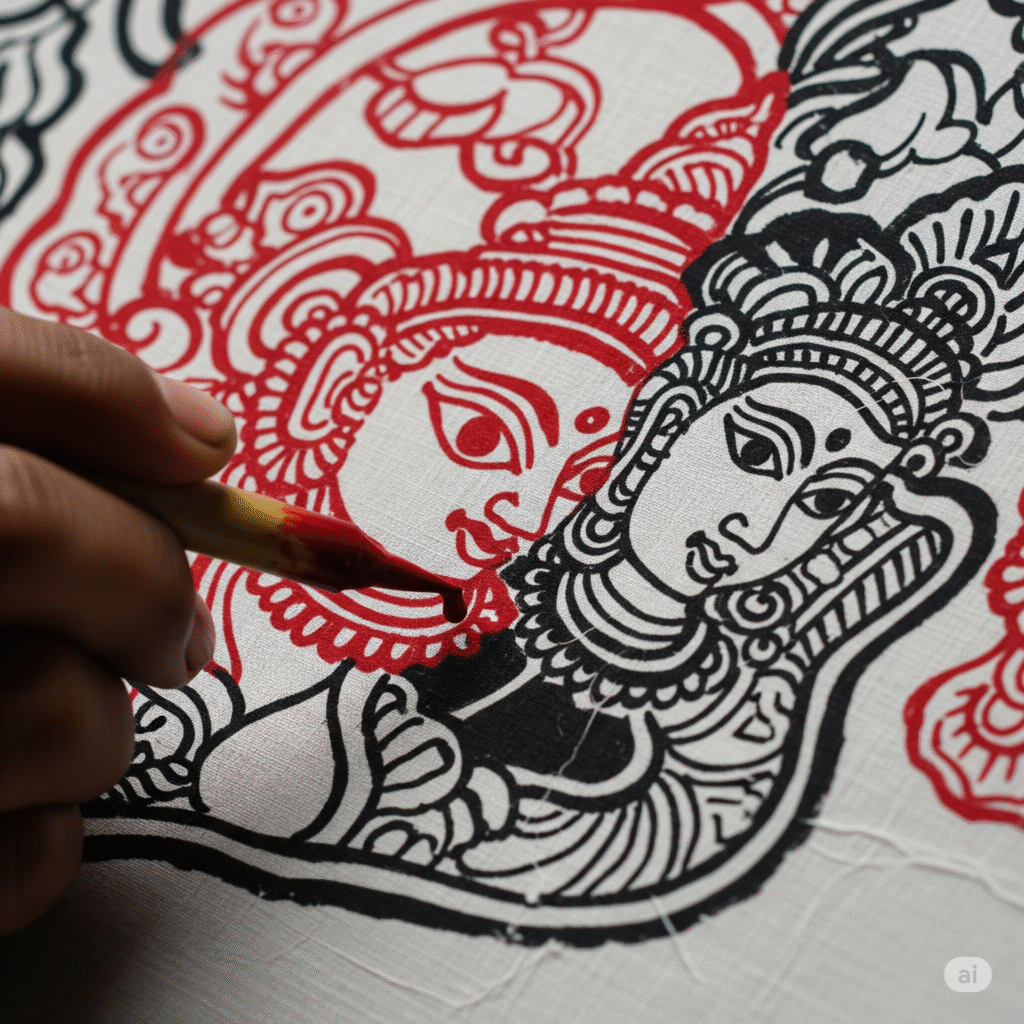
Savitri grew up watching her father paint stories from the Ramayana onto long scrolls. He taught her how to grind flowers into dyes and how to draw fluid figures without using stencils. At the time, very few women were taught the full technique, but she was determined to learn everything.
Today, she runs a small workshop near the temple town of Srikalahasti where she trains young artists and sells her work to collectors, cultural organizations, and museums. Some of her pieces have even been displayed internationally.
Nature as the Palette
Kalamkari is deeply tied to the earth. Every step of the process is chemical-free. The outlines are drawn using a solution made from fermented jaggery and iron, while the reds come from madder root, blues from indigo, and yellows from pomegranate skins. Fabrics are washed in cow dung water and dried in the sun between each layer of painting.
Savitri often says that the colors breathe with the fabric and change slightly with time, just like stories passed down through generations.
Challenges in a Changing World
In the age of mass production and synthetic prints, hand-painted Kalamkari faces serious threats. It is labor-intensive, requires specific seasonal conditions, and depends on knowledge that is not widely documented.
Many younger artists move to cities or switch to faster techniques. But Savitri insists on doing everything the traditional way, even if it takes longer. She believes that speed cannot replace soul. She has started conducting workshops for school children and tourists to keep the interest alive.
Recognition and Revival
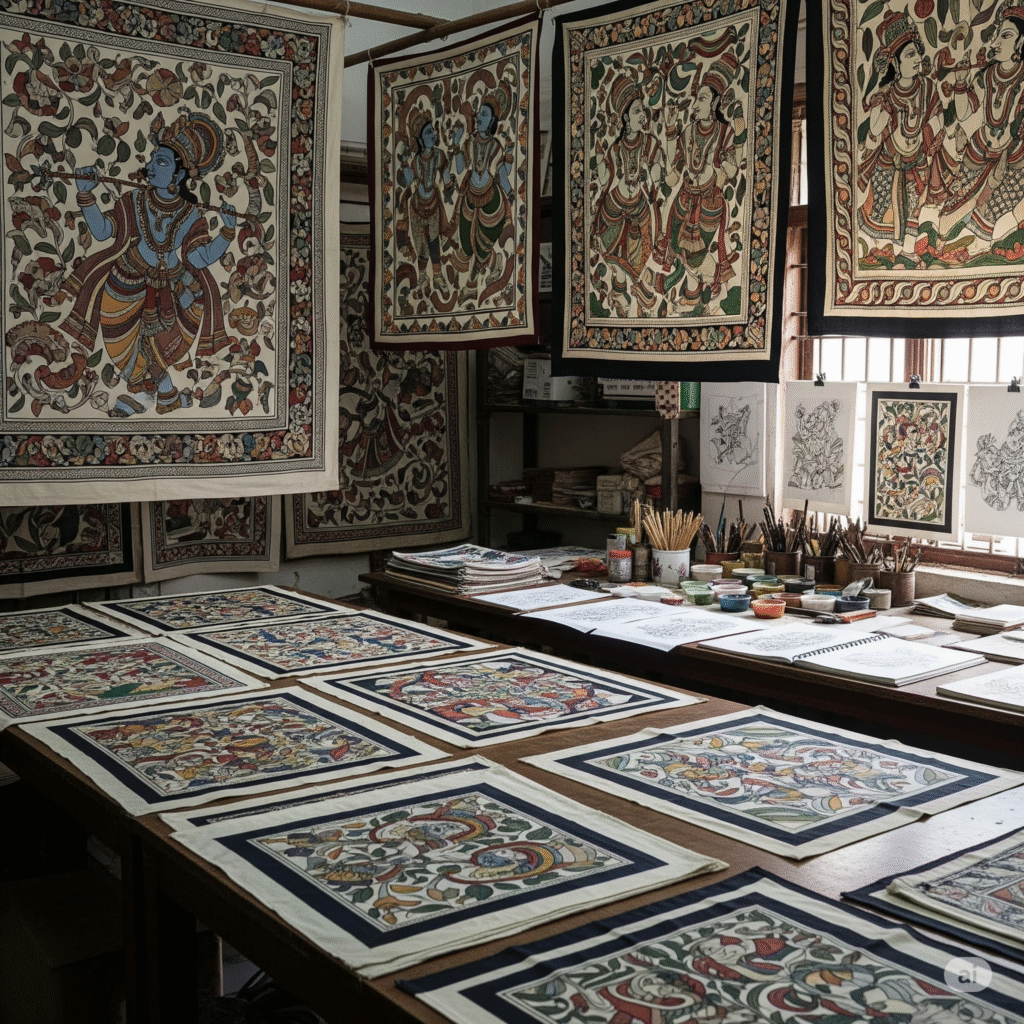
In 2019, Savitri received a National Award for her contribution to Kalamkari. But she says the real reward is seeing a student complete their first painting or hearing that a piece has inspired someone to learn about their roots.
She also collaborates with eco-conscious designers who want to include authentic craft in modern fashion. Together, they create sarees, wall hangings, and accessories that honor tradition while appealing to new generations.
Why Her Work Matters
Savitri Devi’s journey is a reminder that art is not just about beauty. It is also about memory, community, and identity. In her studio, each brushstroke is a prayer, each pattern a passage through time. By holding on to the slow, sacred process of Kalamkari, she ensures that the stories once told in temple halls continue to live on cotton and canvas.
In a world of fast fashion and forgotten roots, her work stands as quiet proof that tradition can adapt, survive, and even thrive — as long as someone cares enough to carry it forward.
